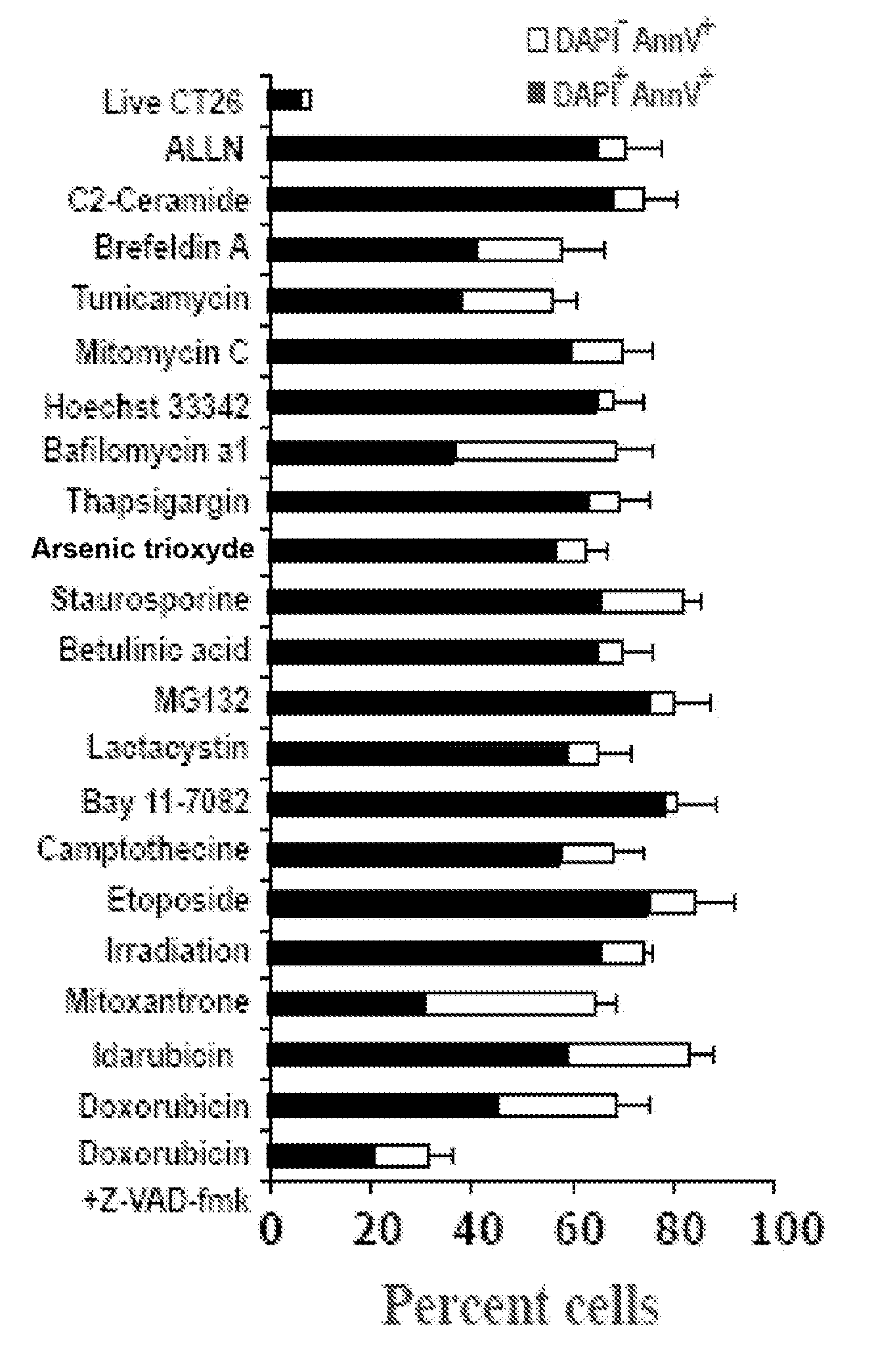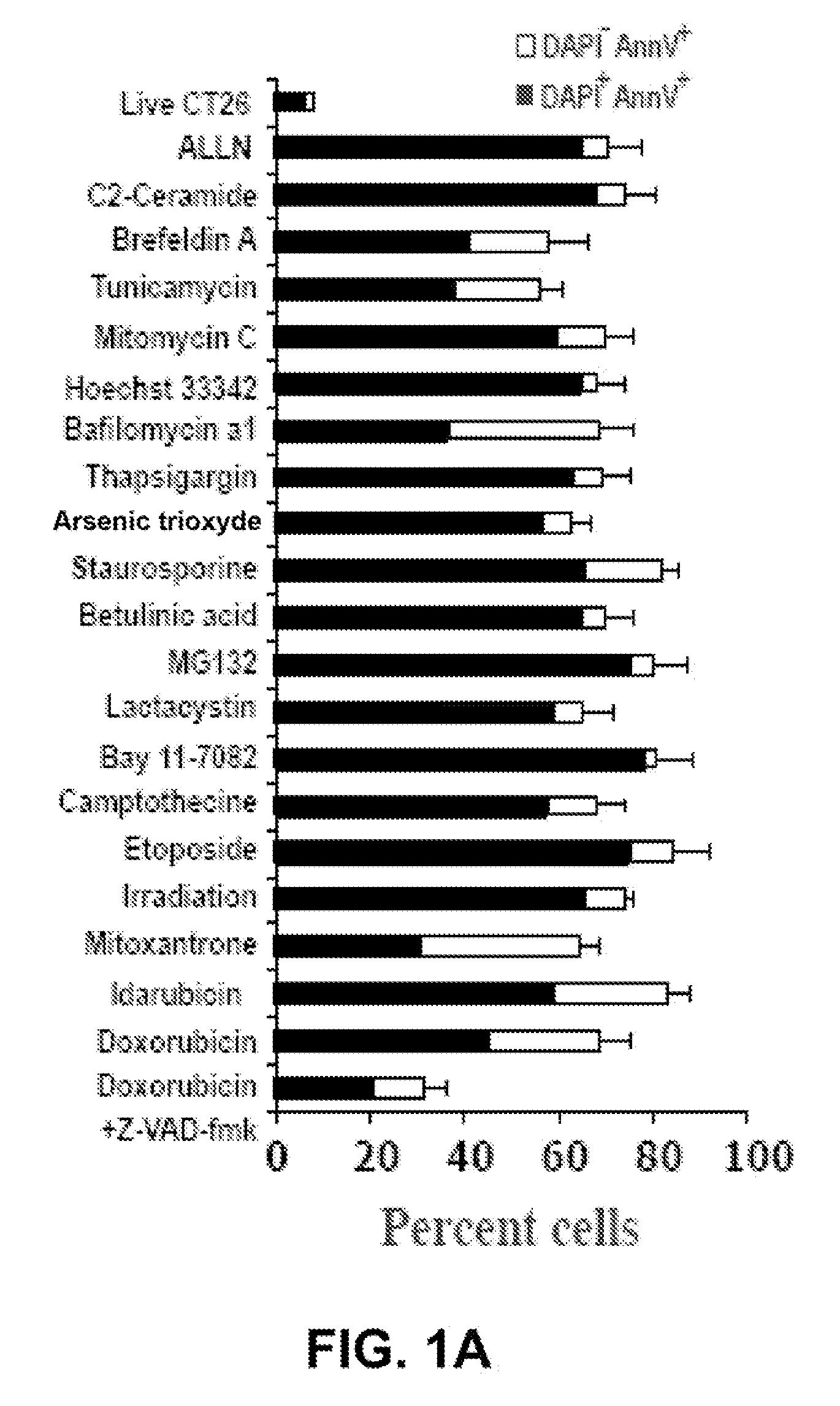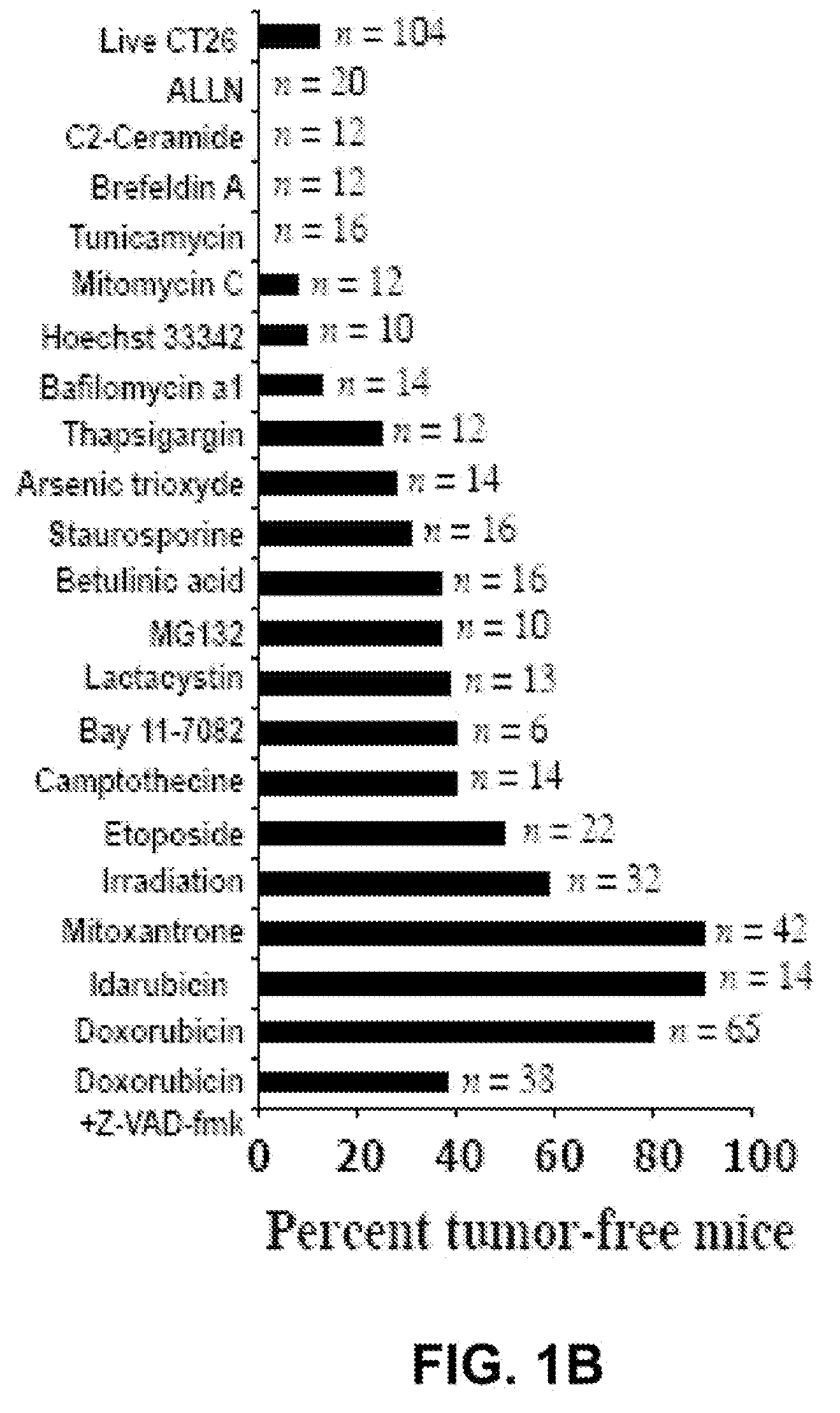Service for effecting localized, non-systemic and systemic, immunogenic treatment of cancer using erp57 translocation
- Summary
- Abstract
- Description
- Claims
- Application Information
AI Technical Summary
Benefits of technology
Problems solved by technology
Method used
Image
Examples
example 3
Requirement of CRT and not ERP57 for DC-Mediated Recognition, of Dying Tumor Cells
[0147]In view of the established role of CRT as an “eat me” signal it was decided to further investigate the possible implication of CRT in the phagocytosis of anthracyclines-treated tumor cells by DC, a cell type that is stringently required for mounting an immune response against apoptotic tumor cells. Anthracyclines-treated tumor cells acquired the property to be phagocytosed by DC quickly, well before the manifestation of apoptotic changes, within a few hours after treatment with doxorubicin or mitoxantrone (FIGS. 3A, 2SE), correlating with the rapid induction of CRT (FIGS. 3B, 1SA, 1SB) and the acquisition of immunogenicity (FIG. 2SF), and correlating with rapid induction of ERP57 (FIGS. 2SD, 3SB).
[0148]The presence of CRT and / or ERP57 on the surface of tumor cells treated with a panel of distinct cell death inducers strongly correlated with their DC-mediated phagocytosis, suggesting that CRT and ...
example 4
Requirement of CRT and not ERP57 for Immunogenicity of Dying Tumor Cells
[0150]The knock-down of CRT compromised the immunogenicity of mitoxantrone-treated CT26 cells, and this detect was restored when rCRT was used to complement the CRT detect induced by the CRT-specific siRNA. This result was obtained in two distinct experimental systems, namely (1) when CT26 tumor cells were injected into the flank of Balb / c mice (or MCA205 cells were injected info C57BI / 6 mice) to assess the efficacy of anti-tumor vaccination (FIG. 4A) and (ii) when the tumor cells were injected info the foot pad to measure interferon-γ production by T cells from the popliteal lymph node (FIG. 4B). in this latter system, absorption of rCRT to the plasma membrane surface greatly enhanced the immunogenicity of cells that usually fail to induce an immune response such as mitomycin C-treated cells (FIG. 4C). Similarly, etoposide-treated cells coated with rCRT elicited a vigorous anti-tumor immune response in vivo, in...
example 5
Inhibitors of PP1 / GADD34 Induce Both CRT and ERP57 Exposure and Induce Immunogenicity
[0154]Since anthracyclines-induced CRT and ERP57 exposure was a rather rapid process (within 1 hour. FIG. 1 SA, 1SB, 2SC, 2SD), it was suspected that anthracyclines might exert effects that are not mediated by genotoxic stress. In response to mitoxantrone. enucleated cells (cytoplasts) readily (within 1 hour) exposed both CRT (FIG. 5A) and ERP57, and became preys of DC as efficiently as intact cells (FIG. 3A), indicating the existence of a cytoplasmic (non-nuclear) anthracyclines target. Anthracyclines failed to induce immediate mitochondrial stress, yet caused the rapid phosphorylation of eIF2α (FIG. 5B), a protein that is typically hyperphosphorylated in ER stress due to the activation of stress kinases. Knock-down of the four kinases known to phosphorylate eIF2α (GCN2, HRI, PERK, PKR) failed to Inhibit the anthracyclines-stimulated CRT and ERP57 exposure, in contrast, knock-down of either GADD34 ...
PUM
| Property | Measurement | Unit |
|---|---|---|
| Cell death | aaaaa | aaaaa |
| Immunogenicity | aaaaa | aaaaa |
Abstract
Description
Claims
Application Information
 Login to View More
Login to View More - R&D
- Intellectual Property
- Life Sciences
- Materials
- Tech Scout
- Unparalleled Data Quality
- Higher Quality Content
- 60% Fewer Hallucinations
Browse by: Latest US Patents, China's latest patents, Technical Efficacy Thesaurus, Application Domain, Technology Topic, Popular Technical Reports.
© 2025 PatSnap. All rights reserved.Legal|Privacy policy|Modern Slavery Act Transparency Statement|Sitemap|About US| Contact US: help@patsnap.com



